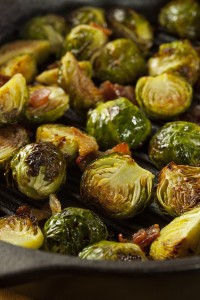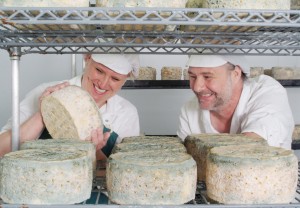Winter Wonders
Brussels Sprouts

A member of the Brassica family, sprouts are believed to have been cultivated in Ancient Rome but get their name from being grown extensively in Belgium. High in vitamins A, C and K, these neat little cabbages also contain folic acid and are a great source of fibre. Interestingly, our genetic make-up dictates whether we love or hate sprouts with some people possessing a gene causing a reaction to the bitterness.
These vegetables really should not be reserved for just Christmas as the tasty, green packages can be braised, fried, roasted, sautéd, shredded raw in a salad and are great with additions such as maple syrup, honey, balsamic vinegar, soy sauce, mustard, bacon, pancetta or chestnuts. Contrary to belief, sprouts do not need a cross cut into their bottoms for boiling as it can water log them.
Kale
A member of the brassica family, this leafy vegetable is so packed with nutrients, it is now often labelled as a superfood and rightly so. Kale enjoyed a come back following the wartime ‘Dig for Victory’ campaign but it was one of the most common vegetables in all of Europe during the Middle Ages. It’s origins stem right back to Ancient Greece and the Romans also enjoyed it, referring to it as Sabellian kale.
Today, kale varies from plain-leaved through to curly kale with colours from light green through to very dark green such as cavolo nero – black cabbage. All kale is packed with vitamins A, C and K in addition to calcium, folic acid and even lutein, an antioxidant which helps keeps eyes healthy. This vegetable also packs a punch in flavour and is best following the first frosts of the winter.
Jerusalem Artichoke
A vegetable that perhaps has the most misleading name of all. It is neither a type of artichoke nor has any connection with Jerusalem. It is one of the most interesting looking of all root vegetables and was first cultivated by Native Americans. As part of the daisy family, the flowers resemble sunflowers and early Italian settlers named it girasole being the Italian for sunflower. It is thought that this changed to Jersulam whilst the other part of it’s name is thought to have been coined from it’s artichoke-like taste.
With such a nutty and sweet flavour, artichokes make a brilliant addition to any collection of roasted vegetables. As with other root vegetables, they can also be fired, sautéed, mashed or puréed to make delicious soups. Unlike potatoes, Jerusalem Artichokes contain very little starch and are rich in fructose which make them a healthy choice for diabetics and is what gives them a sweet flavour. Resembling ginger root, the vegetable will store well in a cool environment and can be either just scrubbed or peeled before cooking.
Cheese
There has been an incredible renaissance in english cheese in the past decade, fuelled partly by dairy farmers looking for a better return for their milk but also by specialist outlets such as Neal’s Yard promoting artisan and farmhouse cheeses. We now produce over 700 varieties of cheese, far more than even France. Sussex is home to several award-winning cheese makers and although Surrey has only one, they happen to produce one of the country’s finest blues – Norbury Blue, together with a delightful crumbly white cheese interestingly named Dirty Vicar.
A cheese board made up of just local varieties can be really diverse and cater for all tastes from soft brie types, mature cheddars, farmhouses, a wide choice of blues, creamy semi-softs, sheep and goats cheeses. There is plenty of debate over raw milk cheese, although it is far less of a risk nowadays. Most experts agree it produces the creamiest and the best flavour in cheese but it is recommended that the very young, elderly and pregnant women should avoid it. Stilton has been one of the most unfortunate victims of a directorate preventing its production from raw milk which, many believe, has resulted in a more bland cheese that doesn’t come even close to some the artisan blues now available from local producers.


